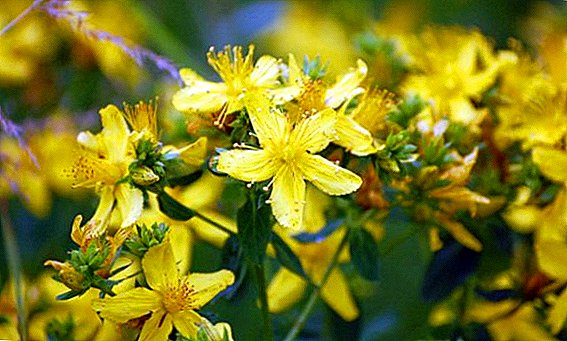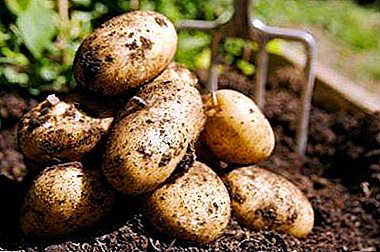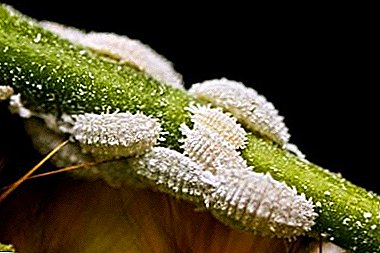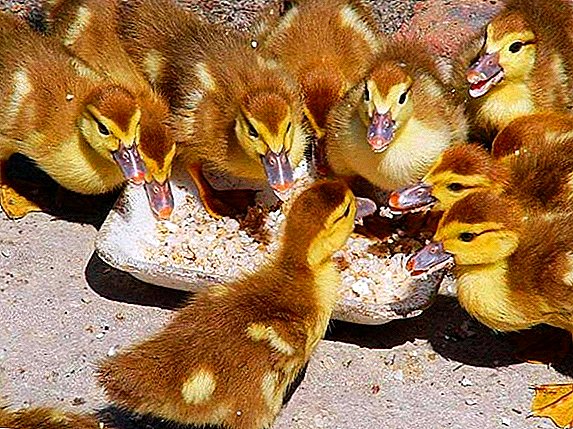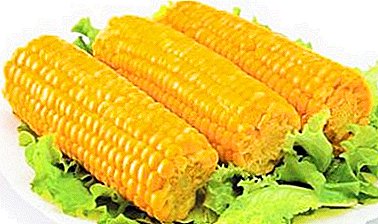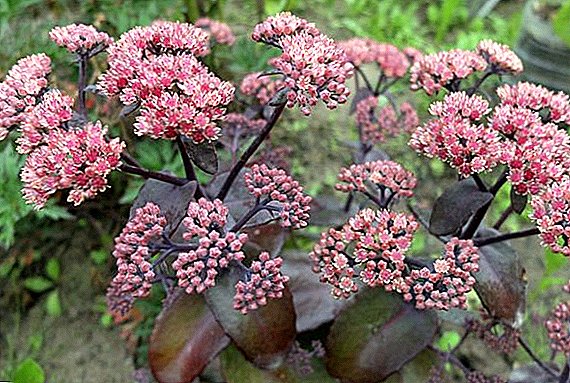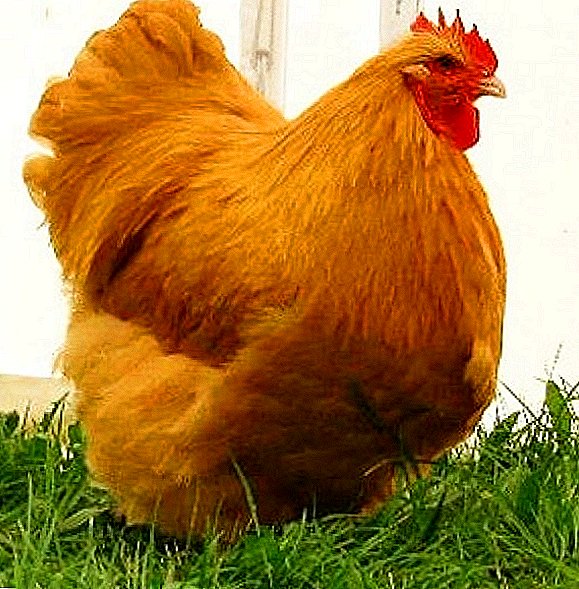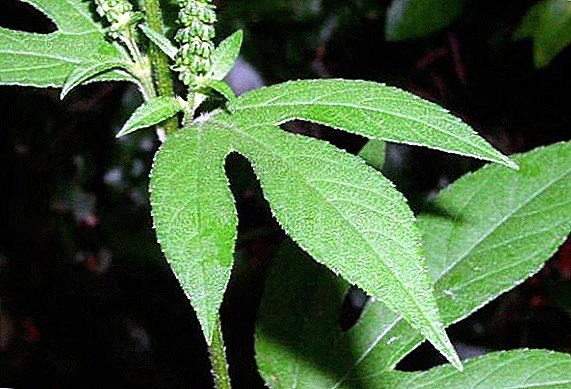 Ambrosia is well known to people suffering every summer from allergic manifestations to the pollen of a given plant. This is a representative of the Astrov family, numbering 41 species. In our latitudes grows four of them. About one of the species - ambrosia tripartite - will be discussed in our article.
Ambrosia is well known to people suffering every summer from allergic manifestations to the pollen of a given plant. This is a representative of the Astrov family, numbering 41 species. In our latitudes grows four of them. About one of the species - ambrosia tripartite - will be discussed in our article.
Botanical description
In ambrosia, the tripartite has a rather high straight stalk, reaching 1.5 m in height and 3-4 cm in width. The root system is branched, pivotal. The leaves are opposite, four-, five-fold, located along the entire length of the stem.
Flowering begins in late July and lasts until October. Male flowers are formed in the form of brushes up to 10 cm in length on the tops of the stems. Female - appear in the axils of the leaves. The flowers are small, up to 1 cm in diameter, yellow.  After flowering, the fruits are tied up in the form of obovate seedlings of gray-green color with a length of 0.5-0.6 cm and a width of 0.3-0.4 cm.
After flowering, the fruits are tied up in the form of obovate seedlings of gray-green color with a length of 0.5-0.6 cm and a width of 0.3-0.4 cm.
Did you know? The Latin name ambrósia is derived from the Greek word, which means the food of the gods and the fragrant ointment used by the Greek gods for rubbing to gain immortality..
Homeland and plant propagation
North America is considered the birthplace of ambrosia. In Europe, she came in the XIX century. But its sad reputation has already gained in the twentieth century. It was then that people discovered that weed quickly captures new territories, it is difficult to withdraw, and it causes pollinosis.
Ambrosia likes to settle along the roadsides, on waste grounds, near railway tracks, on landfills, along river banks. In addition, it actively colonizes fields, gardens, gardens, parks. It is found in rural and urban areas.
Gardeners and gardeners will be useful to learn how to get rid of quinoa, dodder, wash off, milkweed, purslane, dandelions in the area.
The rapid spread of this weedy culture is due to several reasons:
- global warming, in connection with which the northern regions have also become favorable for the growth of ambrosia;
- changes in the agricultural practices of some countries;
- an economic factor, as a result of which there was a release of lands that are not cultivated and are in an abandoned state;
- destruction of natural landscapes by people.
 Today, ambrosia is found in Europe, the Far East, the Caucasus, Eastern Siberia, North and Central America, and Africa.
Today, ambrosia is found in Europe, the Far East, the Caucasus, Eastern Siberia, North and Central America, and Africa.Did you know? Ambrosia is a very tenacious plant. Its seeds retain their germination, according to some data, for 40 years, according to others - for 100 years.
Ambrosia Harm
Ambrosia does enormous harm to agricultural land and plants growing next to it, as well as to human health.
For soil
First, it drains and drains the soil. To make the soil unsuitable for growing cultivated plants, ambrosia takes only a few years.  Secondly, this grass is very moisture-loving and has a strong root system, which grows 4 meters deep, so it absorbs a lot of water from the soil, leaving vegetable and grain crops without adequate nutrition. Moreover, with its wide leaves it does not allow sunlight to reach them, which negatively affects the development of plants and their productivity.
Secondly, this grass is very moisture-loving and has a strong root system, which grows 4 meters deep, so it absorbs a lot of water from the soil, leaving vegetable and grain crops without adequate nutrition. Moreover, with its wide leaves it does not allow sunlight to reach them, which negatively affects the development of plants and their productivity.
The following problems become a consequence of mass weed propagation:
- reducing the amount of fertile land;
- drying the humus layer;
- displacement from certain areas of cultivated plants - sunflower, cereals, legumes, buckwheat, and others are the first to be affected by the weed;
- difficulties in harvesting;
- crop losses;
- reduction in the quality of green fodder when ambrosia gets into it (livestock does not consume it because of the bitterness given by the essential oils contained in the plant).
For man
In the period of flowering of ambrosia, when pollen of the plant enters the air, people who are prone to allergies develop pollinosis - a seasonal allergic rhinoconjunctivitis, characterized by abundant nasal discharge, itching and redness of the eyes, dermatitis, sore throat, worsening of the general condition. The most terrible manifestations of it are attacks of breathlessness, anaphylactic shock.  Unfortunately, pollinosis is rarely treatable — you must either avoid contact with the allergen, or take antihistamines during the acute course of the disease to improve the condition.
Unfortunately, pollinosis is rarely treatable — you must either avoid contact with the allergen, or take antihistamines during the acute course of the disease to improve the condition.
Despite all the harm that ambrosia does to a person, it also has beneficial properties.
Especially dangerous is the occurrence of pollinosis in young children who have not yet fully formed the immune system. The disease significantly affects the quality of life of babies.
Pollinosis develops when a concentration of 25 pollen particles per square kilometer is reached in the air. m atmosphere. One adult plant brings several million such harmful particles per season. With strong winds, they are spread over considerable distances.
Did you know? Pollinosis is one of the most common allergic diseases. According to medical estimates, about 10% of the world's population suffers from it. The disease was first described by an English doctor, John Bostock, in 1819. He called it hay fever, because he believed that the disease causes hay.
How to deal with weed
In the historic homeland, Ambrosia has about 600 natural enemies who do not allow it to grow much and turn into a quarantine plant. Among them are other plants and insects. In our latitudes, alas, no. And since there is no doubt that it is necessary to fight with ambrosia, then this has to be done by man. There are several ways to destroy a weed - agrotechnical, biological and chemical. Agrotechnical can be applied in the early stages of weed propagation. To biological and chemical will need to resort in case of severe infection.
And since there is no doubt that it is necessary to fight with ambrosia, then this has to be done by man. There are several ways to destroy a weed - agrotechnical, biological and chemical. Agrotechnical can be applied in the early stages of weed propagation. To biological and chemical will need to resort in case of severe infection.
Learn how to get rid of weeds and grass folk remedies.
In the early stages
If you notice in your garden or in the garden only a few representatives of this plant, they should be removed immediately. To do this, you can use the following methods:
Pulling out. It should be pulled together with the root. This should be done before the appearance of flowers. After pulling out, it is necessary to loosen the soil, so that the seeds germinate more quickly if they fall into the ground.
Digging up. When choosing this method, you need to be ready to conduct it for several years in a row to get the desired result.
Mowing. The effect can be achieved only by making reusable mowing. However, you can only mow in the period of budding. When mowing the grass in the period of active growth, it will actively form new shoots. As a result, they will have to mow three to five times per season.
Important! After removing the plant, it must be destroyed by burning. Leave it in the place of removal from the soil is strictly prohibited.
On "heavy" sites
In severely contaminated fields, more serious measures will be required:
Repression by other plants. In order to create ambrosia adverse conditions, it is advised to push out with the help of perennial plants and lawn grasses. In places of hayfields and pastures it is necessary to plant bean and cereal perennials in mixed rows. After two or three years, they are able to completely force out ambrosia.  To suppress ambrosia, it is worth planting alfalfa on the plot
To suppress ambrosia, it is worth planting alfalfa on the plot
Among the grasses capable of filling the plot, having conquered it from the weed, include alfalfa, sarepta mustard, grains, foxtail, fescue, salvage, awnless brood.
Delivery of natural enemies. Since in many areas where ambrosia grows, insects that feed on this plant are not found, they can be specially imported. So, there are cases when ambrosia striped leaf beetles were imported to China, Europe, Australia and the former Soviet Union. Today, this experiment is carried out in many areas. Some of them managed to significantly reduce the number of ambrosia or completely destroy it. However, it has not yet been possible to significantly affect the average population of the plant. Since 2013, studies of the influence of the leaf beetle on ambrosia have resumed in Russia. They are conducted in Ukraine. And in Switzerland, they began experimenting with another species of North American beetles, also eating this weed.
Chemical application. For the treatment of large areas used herbicide preparations from the group of glyphosates:
- "Caliber";
- Glisol;
- "Tornado";
- "Hurricane Forte";
- Granstar;
- Roundup and others.

We advise you to get acquainted with the types of herbicides that are used to control weeds.
Fields are left under steam and treated with chemicals several times per season.
It should be remembered that the use of herbicides on pastures, in areas of resorts, places of residence of people is prohibited. Therefore, in settlements, the issue of the destruction of ambrosia is still open. Ukraine has patented a drug that is safe for people and animals, called "Allergo STOP Ambrosia", which affects the mineral balance of the herb.
Another way to fight against ambrosia in cities is to call people everywhere to pull out a weed and hand it over to state quarantine services or charitable foundations for a fee.
Important! When applying the chemical method, you must adhere to personal safety measures, protecting the respiratory organs, body and organs of vision. It is also necessary to strictly follow the instructions in terms of the preparation of the solution and its dosage.

Preventive measures
Of course, the problem is better not to allow than to allocate a lot of time, money and effort to solve it. To prevent land contamination with ambrosia, you must comply with the following preventive measures:
- Observe the recommended alternation of crops in the rotation.
- Properly handle the soil in the autumn and spring periods.
- Ensure that all weeds are destroyed on time.
- Carry out the proper care of cultivated plants.
- To produce a separate collection and storage of harvest from clean and littered fields.
- Abandon the use of seeds of unknown production.
 Thus, ambrosia is a quarantine weed that you definitely need to fight. This plant is characterized by survivability, rapid spread and particular harmfulness in relation to cultivated plants, soils and humans. In order not to let the harmful weed into your field, you must follow the rules of crop rotation, to produce preventive measures. In the case of ambrosia should begin as soon as possible to get rid of it. Experts say that the destruction of the weed is possible only by combining common efforts and the simultaneous application of several methods of control.
Thus, ambrosia is a quarantine weed that you definitely need to fight. This plant is characterized by survivability, rapid spread and particular harmfulness in relation to cultivated plants, soils and humans. In order not to let the harmful weed into your field, you must follow the rules of crop rotation, to produce preventive measures. In the case of ambrosia should begin as soon as possible to get rid of it. Experts say that the destruction of the weed is possible only by combining common efforts and the simultaneous application of several methods of control.

